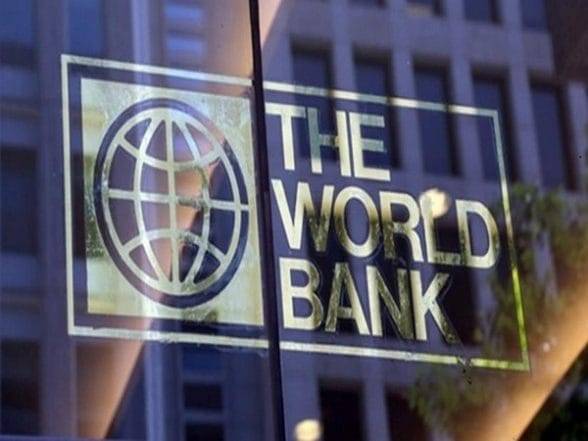Main Points In Hindi (मुख्य बातें – हिंदी में)
यहां पर दी गई रिपोर्ट के मुख्य बिंदु निम्नलिखित हैं:
-
कमोडिटी कीमतों में गिरावट: विश्व बैंक ने घोषणा की है कि अंतरराष्ट्रीय बाजारों में कमोडिटी कीमतों में 2025 में 5% और 2026 में 2% की कमी आ सकती है, जिससे ये 2020 के बाद से अपने सबसे निचले स्तर पर पहुंच जाएंगे।
-
तेल की कीमतें: रिपोर्ट में कहा गया है कि ब्रेंट कच्चे तेल की औसत कीमत 2024 में 80 अमेरिकी डॉलर प्रति बैरल रहने की उम्मीद है, जो 2025 में 73 डॉलर और 2026 में 72 डॉलर तक गिर सकती है। इसके पीछे वैश्विक तेल मांग में कमी और ओपेक+ की बढ़ती आपूर्ति क्षमता को बताया गया है।
-
धातु और कृषि वस्तुओं की स्थिरता: धातु बाजार में आम तौर पर स्थिरता देखी जा रही है, जबकि कृषि वस्तुओं की कीमतों में अच्छी फसल की पैदावार के कारण गिरावट आ रही है। इसके परिणामस्वरूप खाद्य कीमतों में और कमी आने की संभावना है।
-
भू-राजनीतिक तनाव का प्रभाव: मध्य पूर्व में युद्ध का बढ़ने की संभावना अल्पकालिक जोखिम पैदा करती है, जिससे मूल्य वृद्धि हो सकती है। वैश्विक ऊर्जा बाजार भू-राजनीतिक तनाव पर प्रतिक्रिया देंगे।
- कमोडिटी बाजार में संभावित जोखिम: बढ़ती वैश्विक आर्थिक प्रोत्साहन और जलवायु परिवर्तन के कारण संभावित मौसम की स्थिति, कमोडिटी कीमतों को प्रभावित कर सकती है, जबकि वैश्विक औद्योगिक गतिविधि में कमजोरी भी मांग में कमी ला सकती है।
Main Points In English(मुख्य बातें – अंग्रेज़ी में)
Here are the main points from the article regarding the World Bank’s Commodity Market Outlook:


-
Projected Price Decline: The World Bank forecasts a 5% decrease in global commodity prices in 2025 and a 2% drop in 2026, following a predicted 3% decline in 2023. This decline will be the lowest level since 2020.
-
Oil Price Trends: Brent crude oil prices are expected to average $80 per barrel in 2024, with projections of falling to $73 in 2025 and $72 in 2026. This marks a significant decline from the peaks seen in 2022.
-
Impact of Geopolitical Tensions: While there is an overall downward trend in commodity prices, the report highlights that escalating wars in the Middle East could present short-term risks that may push prices up.
-
Stability in Metal and Agricultural Markets: The metal market outlook remains relatively stable, with base metal prices expected to decline slightly. Conversely, favorable weather conditions have led to a decrease in agricultural commodity prices, contributing to improved affordability in emerging markets.
- Risks and Influences on Pricing: Commodity prices are influenced by various factors, including global economic stimulus measures, geopolitical risks, and demand from major economies like China. The balance between supply dynamics from OPEC+ and non-OPEC producers will play a crucial role in controlling price levels through 2026.
Complete News In Hindi(पूरी खबर – हिंदी में)
नई दिल्ली [India]3 नवंबर (एएनआई): विश्व बैंक समूह ने अपने अक्टूबर में कहा कि अंतरराष्ट्रीय बाजारों में कमोडिटी की कीमतें 2025 में 5 प्रतिशत और 2026 में 2 प्रतिशत कम हो जाएंगी, इस साल 3 प्रतिशत की गिरावट के बाद, 2020 के बाद से अपने सबसे निचले स्तर पर पहुंच जाएगी। कमोडिटी मार्केट आउटलुक का संस्करण।
वैश्विक इकाई ने कहा कि तेल की कीमतों में गिरावट से कमोडिटी की कीमतों में गिरावट का समर्थन मिलेगा, जबकि प्राकृतिक गैस की कीमतों में बढ़ोतरी और धातुओं और कृषि वस्तुओं के लिए स्थिर दृष्टिकोण समग्र गिरावट को कम कर देंगे।
यह भी पढ़ें | एनएचएआई ने द्वारका एक्सप्रेसवे पर देश के पहले मल्टी-लेन फ्री फ्लो टोल कलेक्शन के लिए बैंकों से आवेदन मांगे हैं।
इसमें कहा गया है कि ब्रेंट कच्चे तेल की कीमतें 2025 में 73 अमेरिकी डॉलर और 2026 में 72 अमेरिकी डॉलर तक गिरने से पहले 2024 में औसतन 80 अमेरिकी डॉलर प्रति बैरल होने की उम्मीद है।
रिपोर्ट में कहा गया है कि वार्षिक औसत तेल की कीमतों में 2022 के उच्चतम स्तर से 2026 तक लगातार चार वर्षों तक गिरावट आने की उम्मीद है और यह उनके 2021 के स्तर से थोड़ा ऊपर स्थिर हो जाएगी।
अनुमानित मूल्य में गिरावट कारकों के संयोजन को दर्शाती है, जिसमें धीमी वैश्विक तेल मांग – विशेष रूप से चीन से – विविध तेल उत्पादन और ओपेक + के भीतर आपूर्ति क्षमता में वृद्धि शामिल है।
हालाँकि, इसने इस बात पर प्रकाश डाला कि मध्य पूर्व में युद्ध बढ़ने की संभावना एक अल्पकालिक जोखिम होगी जो कीमतों को बढ़ा सकती है और अन्य कमोडिटी बाजारों को प्रभावित कर सकती है।
रिपोर्ट के अनुसार, ऊर्जा क्षेत्र अल्पावधि में मूल्य स्थितियों को प्रभावित करता है, और वैश्विक ऊर्जा बाजार भू-राजनीतिक तनाव पर बारीकी से प्रतिक्रिया देंगे।
क्षेत्रीय संघर्षों के बाद अक्टूबर 2023 और अप्रैल 2024 में तेल की कीमतें 90 अमेरिकी डॉलर प्रति बैरल से ऊपर पहुंच गईं। हालाँकि ये उछाल अक्सर अस्थायी थे, आपूर्ति संबंधी चिंताएँ कम होने के कारण वे स्थिर हो गए।
धातु बाजारों में, दृष्टिकोण अपेक्षाकृत स्थिर बना हुआ है। रिपोर्ट में कहा गया है, “धातु मूल्य सूचकांक 2025-26 में थोड़ा नीचे जाने का अनुमान है। इस वर्ष (वर्ष/वर्ष) 6 प्रतिशत बढ़ने के बाद, बेस मेटल की कीमतें 2026 में 3 प्रतिशत नरम होने से पहले अगले साल स्थिर रहने का अनुमान है।” .
मौजूदा ऊर्जा परिवर्तन से मजबूत मांग के कारण एल्युमीनियम और तांबे जैसी बेस धातुओं की कीमतों में लचीलापन देखा गया है, हालांकि वैश्विक औद्योगिक विकास में स्थिरता के बाद कीमतों में गिरावट देखी जाएगी।
इस बीच, बढ़ते भू-राजनीतिक जोखिमों और उभरती अर्थव्यवस्थाओं में केंद्रीय बैंकों की मजबूत मांग के कारण पूरे 2024 में सोने की कीमतों में काफी वृद्धि हुई है।
कई क्षेत्रों में अनुकूल मौसम देखने के बाद कृषि जिंसों की कीमतों में गिरावट देखी गई है, जिससे फसल की अच्छी पैदावार को समर्थन मिला है। रिपोर्ट में कहा गया है कि कुल मिलाकर खाद्य कीमतों में और कमी आने की उम्मीद है, जिससे उभरते बाजारों में सामर्थ्य में सुधार करने में मदद मिल सकती है।
आउटलुक में, यह कहा गया कि कमोडिटी की कीमतों में ऊपर और नीचे दोनों जोखिम देखने को मिल सकते हैं। बढ़ती वैश्विक आर्थिक प्रोत्साहन, विशेष रूप से चीन से और जलवायु परिवर्तन के कारण प्रतिकूल मौसम की स्थिति से कीमतें बढ़ सकती हैं, जबकि वैश्विक औद्योगिक गतिविधि में कमजोरी से मांग में कमी आ सकती है। पेट्रोलियम एक्सपोर्टिंग कंट्रीज प्लस (ओपेक+) के संगठन द्वारा संभावित रूप से उत्पादन में कटौती को कम करने और संयुक्त राज्य अमेरिका और ब्राजील जैसे गैर-ओपेक तेल उत्पादकों द्वारा उत्पादन में वृद्धि के साथ, आपूर्ति की स्थिति पर्याप्त बनी रह सकती है, जिससे 2026 तक कमोडिटी की कीमतों को नियंत्रण में रखा जा सकता है। (एएनआई)
(यह सिंडिकेटेड न्यूज फीड से एक असंपादित और ऑटो-जेनरेटेड कहानी है, नवीनतम स्टाफ ने सामग्री के मुख्य भाग को संशोधित या संपादित नहीं किया होगा)
Complete News In English(पूरी खबर – अंग्रेज़ी में)
New Delhi [India], November 3 (ANI): The World Bank Group has stated in its October report that commodity prices in international markets are expected to decline by 5% in 2025 and by 2% in 2026, following a 3% drop this year. This could bring prices to their lowest level since 2020, according to the Commodity Market Outlook.
The global body indicated that falling oil prices will contribute to the overall decrease in commodity prices, although rising natural gas prices and a stable outlook for metals and agricultural products will help mitigate the decline.
The report predicts that Brent crude oil prices will average $80 per barrel in 2024, before falling to $73 in 2025 and $72 in 2026.
Additionally, the report suggests that average oil prices are expected to decline over the next four years from the peak levels of 2022 and stabilize just above their 2021 levels.
The anticipated price declines are attributed to several factors, including weakened global oil demand—particularly from China, diversified oil production, and increased supply capacity within OPEC+.
However, the report cautions that escalating conflict in the Middle East poses a short-term risk that could push prices higher and affect other commodity markets.
According to the report, the energy sector will have a short-term impact on pricing conditions, with global energy markets responding closely to geopolitical tensions.
Following regional conflicts, oil prices soared above $90 per barrel in October 2023 and are expected to remain stable due to reduced supply concerns.
In the metal markets, the outlook remains relatively stable. The report states, “The metal price index is projected to decline slightly in 2025-26. After a 6% increase this year (year-over-year), base metal prices are expected to remain stable next year before softening by 3% in 2026.”
Price resilience for base metals like aluminum and copper is fueled by strong demand resulting from the ongoing energy transition, but price declines are expected as global industrial development stabilizes.
Meanwhile, gold prices have surged throughout 2024 due to rising geopolitical risks and robust demand from central banks in emerging economies.
A favorable weather outlook has led to a decline in agricultural commodity prices, supporting good crop yields. The report indicates that overall food prices are expected to drop further, helping to improve affordability in emerging markets.
The outlook suggests that commodity prices may experience both upward and downward risks. Increased global economic stimulus, particularly from China, and adverse weather conditions due to climate change could drive prices up, while weaknesses in global industrial activity could dampen demand. Supply conditions may remain adequate due to potential production cuts from OPEC+ and increases from non-OPEC oil producers like the USA and Brazil, keeping commodity prices in check until 2026. (ANI)
(This is an unedited and auto-generated story from a syndicated news feed, and the latest staff has not modified or edited the main content.)










